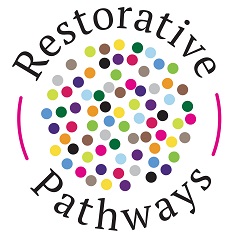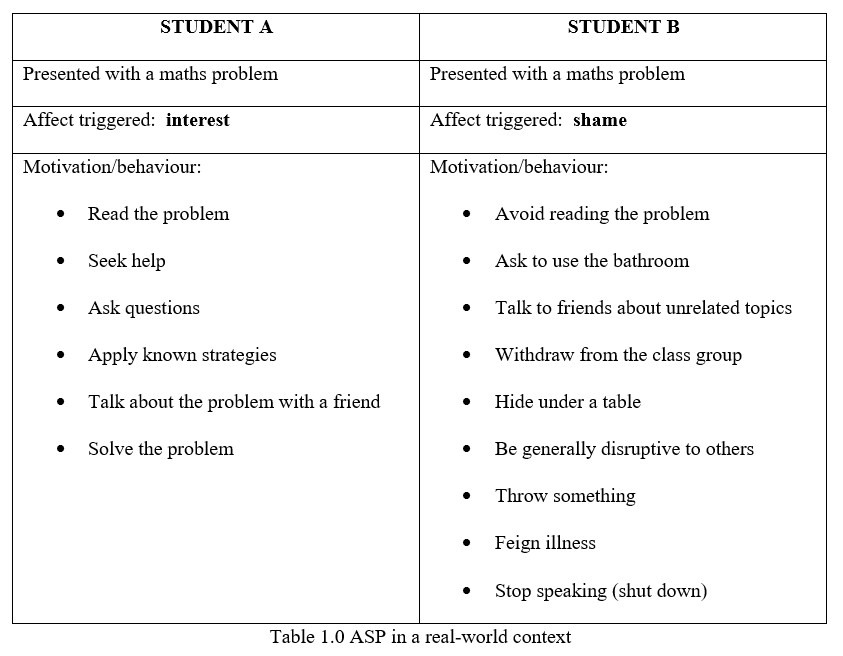The Hammer is But One Tool: using theory to transform restorative approaches in schools
Part 1 of 2
“There is nothing as practical as a good theory” – Kurt Lewin
Lewin’s well-known maxim pits theory against practice and challenges us to consider the implications of knowledge execution without grounding theory. Practice grounded in theory is the difference between knowing what to apply versus knowing when and how to apply it. As Abraham Maslow wisely surmised, if the only tool one has is a hammer, then one is in danger of treating everything as if it were a nail (Maslow, 1966). Arguably, professional development for educators in the field of Restorative Practice has lacked theoretical exploration. This has resulted in restorative approaches being used only as a behaviour management tool in schools rather than the intended purpose: deep relational culture change. At the surface, educators look to be doing and saying all the right things however, scratch the surface and the lack of theoretical understanding becomes apparent, the metaphorical hammer is only being used on nails and specific types of nails to be precise. Over time this approach leads educators to question the effectiveness of Restorative Practices claiming, ‘they don’t work’ before resorting back to punitive measures. And they’re not wrong but the problem doesn’t lie with the hammer, the problem is the lack of theoretical understanding that enables knowledge to be transformed into wisdom. Unpacking theory in teacher workshops is not always easy but in my experience most teachers leave feeling empowered and excited at the prospect of applying their newfound wisdom to real world contexts.
Founded on ancient spiritual and indigenous traditions, restorative justice first appeared in the judicial system in the 1970’s as a means for addressing harm and unlawful behaviour. Since the 1990’s schools have turned to restorative justice to reduce suspensions and expulsions, to manage conflict and address situations of bullying. It has grown to encompass a broad continuum of practices, from reactive to proactive in the justice system and beyond.
Professional development for schools, frames restorative approaches as putting relationships at the centre of the [school] community and provides training for educators to facilitate dialogue between groups of people whom have experienced a harmful event, so they can make amends and restore relationships. Sounds good in theory, but therein lies the problem –professional development in this field that includes theoretical substance is often the exception rather than the norm, to the detriment of deep pedagogical understanding, successful implementation and sustainability in schools.
Arguably teachers want to walk away from a workshop feeling empowered with practical strategies they can implement with relative ease and little preparation as soon as possible – this is certainly feedback I’ve received time and time again. In fact, quoting directly from one participant giving me feedback on how I could improve my workshop, ‘less of the theory and more of the hands-on stuff’. And teachers love the ‘stuff’ don’t they? It’s like coming home from the Royal Show with a show bag of goodies that we can’t wait to open. Often though that bag of goodies loses its appeal fairly quickly when the toys inside break or don’t work as they’re supposed to or when something new and shiny catches our eye. It’s at this point educators and schools begin to throw up their hands and cry ‘this restorative stuff doesn’t work!’.
Workshops that fails to deliver deep theoretical understanding of why restorative approaches work, also fail to challenge beliefs and values around teaching and learning philosophies and pedagogies. It’s a watered-down approach that sees Restorative Practice used as a hammer (a behaviour management tool) rather than its intended purpose, relational cultural change. A tool is just a tool unless we deeply understand its use, engage with it and personally value it, embedding it into the soul of our teaching pedagogy.
If restorative approaches are to succeed in education long term, and deliver on the promise of relational cultural change, professional learning must include theoretical substance and the first port of call is the work of the late Silvan Tomkins and others at The Tomkins Institute. Silvan Tomkins coined a biological theory of emotion and motivation in the 1960’s: Affect Script Psychology (ASP) which has come to be viewed as the cornerstone of understanding why restorative approaches are so effective at building and repairing relationships and changing behaviour. ASP describes that we humans are born with 9 innate affects that instruct us about what to pay attention to and what to act on. We all experience the same biological and physiological reactions to various stimuli in our environment and within our relationships with others (the affects) and as we progress through life, our experiences, interpretations and memories of events create our unique personalities (scripts). Together, the affects and scripts make up who we are, how we see ourselves in the world and how we relate to others, essentially driving our behaviour.
Affects are either positive (inherently rewarding), negative (inherently punishing) or neutral (neither rewarding or punishing) and each have unique biological and physiological reactions. The positive affects, according to Tomkins are interest – excitement and enjoyment – joy. The neutral affect is surprise – startle. The negative affects are anger – rage, distress – anguish, fear – terror, dissmell, disgust and shame-humiliation. Each affect evolved out of necessity, for example, to warn us of impending danger, to save us from poisonous substances or to encourage us to connect with others and therefore prolong our survival. For a more detailed look at each of the nine affects and their biological and physiological responses in the body go to www.tomkins.org. Tomkins argued that we are at our best as humans when we can maximise positive affect, minimise negative affect, freely express all affect and maximise our ability to do those three things; he called it our Central Blueprint for Emotion. According to the theory this blueprint drives our motivation and is responsible for our behaviour.
Looking at this theory in the context of the real world then, let’s explore how a student presented with a maths problem might experience either affect interest or affect shame depending on their ‘bag of scripts’ and how those scripts translate into behaviour.
People react differently to the same trigger due to the neurological scripts they have in play. These scripts are in play for all of us all the time. They are useful in that we don’t have to re-learn how to behave in any given situation time and time again and they distinguish between similar situations, for example, our scripts tell us how to act around the family dinner table at home versus how to act around the dinner table at a professional conference. If our scripts are adaptive, they contribute to healthy functioning and serve us well. Problems arise when maladaptive scripts form as in the case of Student B in Table 1.0.
The classroom environment triggers affect shame often: when we don’t understand something, when we feel excluded, when we lose a game, when we think somebody doesn’t like us, when in conflict with others, when we are called out to answer and we weren’t listening, when we don’t like our appearance, when we missed the punchline of the joke, when we are late to class, and the list goes on. Children with maladaptive shame scripts are easy to spot (when you know what you are looking for) due to the challenging behaviours that often accompany that script. Teachers wise to ASP and the Central Blueprint would identify maladaptive shame scripted behaviour and apply effective strategies, such as pre-empting learning experiences or using restorative dialogue and peace circles, to assist students in naming and metabolising negative emotions, thereby paving the way to learn adaptive shame scripts. Without this knowledge teachers are at risk of reinforcing or exacerbating shame scripts and the accompanying challenging behaviours.
In Part 2 of this article we will again look at this theory in the context of the real world by examining how ASP plays out for students and teachers involved in a restorative approach to conflict.
Between now and when Part 2 is published, do yourself a favour and head over to The Tomkins Institute to broaden your understanding of Affect Script Psychology. If you are already wise to this wonderful body of work then please share how you apply it in your world in the comment section.


Add A Comment